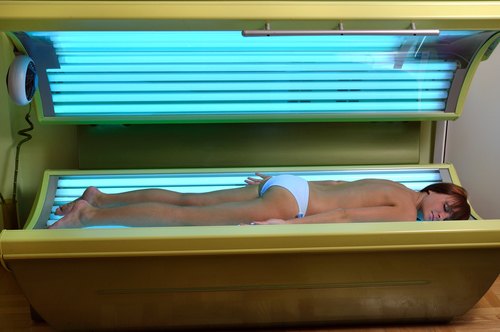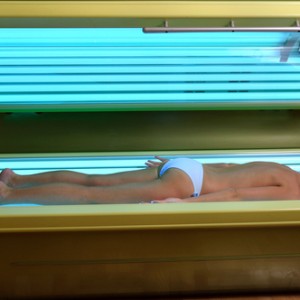According to recent research from the U.S. Centers for Disease Control and Prevention, the trend in indoor tanning among high school students is on the decline. However, white females remain the demographic with the highest incidence of use.
Nonetheless, researchers still believe the numbers are concerning, since indoor tanning is one of the main risk factors for skin cancer.
Even though the rate of high school students who used indoor tanning has shown a decrease, in 2013 data revealed that 20.2% of female students used it at least once, while 10.3% of female students used indoor tanning devices frequently (10 or more times) throughout the year, as revealed by the study published in JAMA Dermatology.
In addition, the results indicated that indoor tanning was most commonly used by non-Hispanic white females. Between 2009 and 2013, the use of artificial tanning devices by female students decreased from 25,4% to 20,2%, in general, while among non-Hispanic white females the numbers lowered from 37.4% to 30.7%. On the other hand, the use of indoor tanning by male students also decreased from 5.3% to 2%, with a particular reduction among non-Hispanic black male students, from 6.1% to 3.2%.
‘These decreased rates in indoor tanning may be partly attributable to an increased awareness of its harms. “Despite these reductions, indoor tanning remains common among youth,” explained the authors in their study conclusions, adding that the major concerns are related to the fact that indoor tanning raises the risk of suffering from skin cancer later in life, particularly upon frequent usage of this technique among younger people.
Lead study author Gery P. Guy Jr., Ph.D., M.P.H., of the U.S. Centers for Disease Control and Prevention, Atlanta, and colleagues, used information from the national Youth Risk Behaviour Surveys from the periods between 2009, 2011 and 2013, to estimate high school students indoor tanning trends. The authors defined the concept of indoor tanning as the use of a tanning device, such as sunlamp, sunbed or tanning booth, but not other options such as spray-on tan.
The subjects were given the options of using indoor tanning at least once in the year prior to the survey, or more than 10 times during the same 12 months, which was determined as frequent use. A total of 16,410 high school students were included in the survey in 2009, 15,425 in 2011 and 13,583 in 2013, with 71%, 71% and 68% responding to it, respectively.
The results raised concerns, since only 56.1 percent of high school students used sunscreen in 2011, and the number of teenagers that admitted to use artificial tanning devices only had a slight decrease of 15.6 percent to 13.3 percent.
Previous research made public last August also revealed that fewer teenagers wear sunscreen when exposed to the sun, while the rate of indoor tanning has hardly changed. The study entitled “Use of Sunscreen and Indoor Tanning Devices Among a Nationally Representative Sample of High School Students” was conducted at William Paterson University in New Jersey and published in the Preventing Chronic Disease journal.



